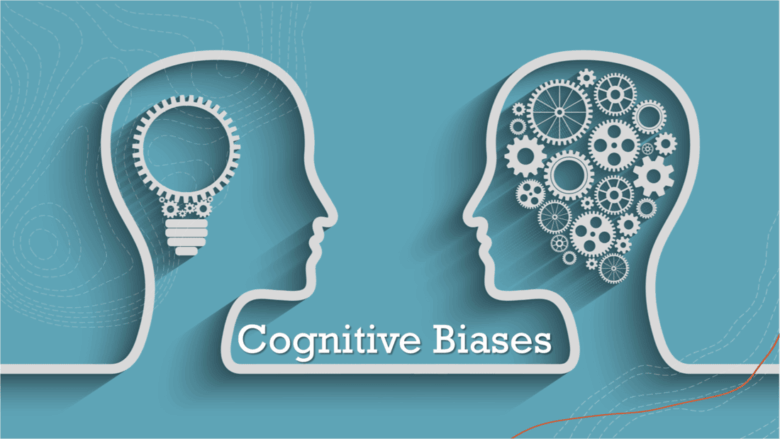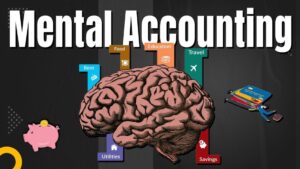Investing isn’t just about looking at statistics and trends; you have to think too. The stock market rewards logic, patience, and strategy. But what do you usually do? Consider your thoughts. Cognitive biases are psychological traps that even the smartest investors can fall into. They are mental shortcuts that help us make quick decisions. They can be useful in everyday life, but they can also make it difficult to make good financial decisions.
These biases can make you feel insecure, out of step, and hinder your financial goals. In this article, we will discuss seven of the worst cognitive biases that negatively impact investing, helping you recognize them and make better decisions. Once you understand how your brain traps you, you can start using that knowledge to defeat those biases.
1. Overconfidence Bias:
Being overconfident in yourself is like investing money in something without even looking at it. Such optimism happens when investors think they know more about the market, their talent, or their ability to predict market trends than they do. People with this bias often take more risks than necessary because they think they know better than the market. For example, someone might put all their money into one stock because they had a hunch or did only a little research.
But the market is difficult to predict, and even professionals can sometimes fail to do so correctly. Overconfident investors often ignore warning signs or new information that contradicts their beliefs. This narrow-minded way of thinking can cost you a lot of money. The real point of investing is not to always be right; it’s about managing risk and being consistent. Being honest about what you don’t know is just as important as knowing many things.
2. Confirmation Bias
Confirmation bias occurs when we seek information that supports what we already believe and ignore all information that contradicts it. This bias is especially prevalent when it comes to investing. If you think a certain IT startup will be the next big thing, you might only read articles that promote it, focus on experts who agree with you, and dismiss all criticism as noise. You prefer to look at things objectively.
Such an attitude can create a distorted view of reality. People who are victims of confirmation bias often hold onto unsuccessful investments for a long time or believe in hype without checking the facts. It is important to question your beliefs, consider other perspectives, and make judgments based on a wide range of information, not just information that makes you feel good about your choices.
3. Loss Aversion:
Loss aversion is when losing money hurts more than winning money feels good. The pain of losing $100 is worse than the wonderful feeling of winning $100. This bias can hinder investors’ trading. It often causes people to behave irrationally, such as not selling stocks that are losing money in the hope that they will make up for it later, or selling stocks too early to secure a small profit and missing out on a larger one. This emotional response makes it harder to make wise decisions. Investors must understand that losses are inevitable and that avoiding short-term pain can result in long-term regret. Having a solid investment plan and adhering to it, even during challenging times, is the most effective way to prevent losses.
4. Herd Mentality:
People are social creatures, and investors are no exception. People with a herd mentality believe that if everyone is doing something, it must be beneficial. This mindset can lead to people buying into a bubble or panic-selling when the market goes down. People participated in the dotcom bubble, and cryptocurrencies crashed because “everyone” was doing it. But just because many people are spending money on something doesn’t mean it’s a smart idea. By the time the public realizes this, it’s often too late to make money from it. If you do your research and have a clear investment plan, you can avoid the problems that come with following the crowd.
5. Anchoring Bias:
When you anchor, you focus on one message, usually the first one you see, and use that to guide all your decisions. For example, if you buy a stock at $100, you’re likely to hold on to it until the price returns to that level, even if the company’s fundamentals have changed. You might also look at the company’s IPO price and compare its current value to it, regardless of how the market is doing. Such an approach can make it difficult to think clearly and adapt to new situations. Smart investors are flexible and don’t hold on to old figures. Instead, they periodically reevaluate their positions based on new facts.
6. Recency Bias:
When you give more importance to current events than to long-term trends, you’re showing a recency bias. You might think that if a stock has gone up for five days in a row, it will continue to go up. Or, if the market has recently gone down, you might panic-sell because you think the decline will continue. This bias causes people to fall back on past successes or act rashly. But history teaches us that markets fluctuate and that short-term changes do not always reflect long-term value. To minimize the risk of recency, keep your long-term goals in mind, diversify your investments, and do not base your decisions solely on the latest news or market changes.
7. Availability Bias:
Availability bias occurs when you make decisions based on the information that is easiest to remember (such as current news, personal experiences, or important market events) rather than on the overall situation. For example, if you hear that a friend has made a lot of money investing in stocks, you may do the same without doing your homework. Or perhaps after seeing news reports about a stock market crash, you are too afraid to invest at all. This bias can cause you to miss opportunities and take unnecessary risks. To invest wisely, you must gather a wide variety of information, consider your options, and not let the latest or most eye-catching facts dictate your thinking.
Conclusion:
Cognitive biases are difficult to tackle. They are always in the back of our minds, unconsciously influencing the choices we make. These mental shortcuts can be dangerous in the world of investing, where rationality and discipline are crucial. But here’s the good news: once you understand the trends, you can start to see them and make better choices. Self-knowledge is just as important in investing as knowledge of the market. You can invest more wisely if you understand the seven cognitive biases: overconfidence, confirmation, loss aversion, herd behavior, anchoring, recency, and availability. Don’t let them fool you and cause you to lose money. Stay interested, stay humble, and trust your instincts before you act.
FAQs:
1. How can I prevent cognitive biases from influencing my investments?
Start by understanding the most common biases. Next, consistently assess your financial choices to determine whether your emotions are impacting them. Journaling can help you discover patterns in the way you think.
2. Don’t experienced investors have these biases?
never. Cognitive biases can affect even the most experienced investors. While experience is beneficial, overcoming these difficulties primarily requires self-awareness and discipline.
3. Should you invest based on feelings or facts?
Always put logic first. Investing based on feelings often means making bad decisions about when to buy or sell or holding bad assets for too long.
4. Can financial advisors help address cognitive biases?
Yes, an expert advisor will give you objective advice and ensure that you do not make judgments based on your feelings.
5. What are the best techniques for learning to control your emotions when investing?
Stick to your long-term plans, diversify your investments, and don’t make hasty decisions based on current circumstances.




